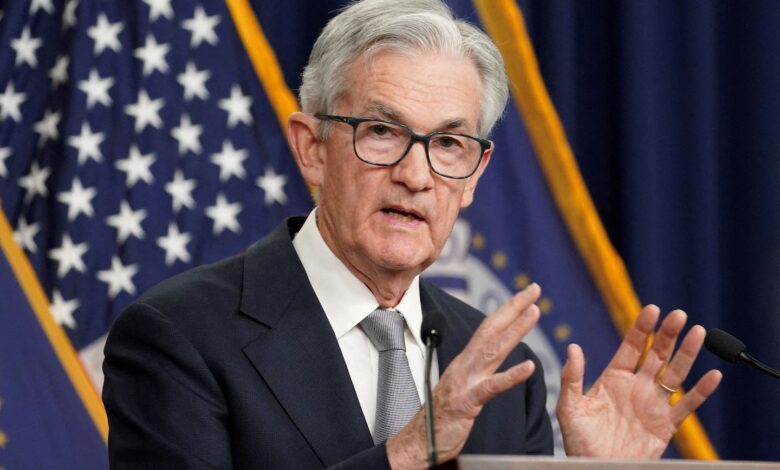Fed eyes interest rate cuts as inflation eases

“The [Fed] judges that the risks to achieving its employment and inflation goals are moving into better balance,” policymakers wrote in a statement. “The economic outlook is uncertain, and the Committee remains highly attentive to inflation risks.”
The statement also noted that the central bank doesn’t expect to trim borrowing costs until “it has gained greater confidence that inflation is moving sustainably toward 2 percent,” which is the Fed’s target.
The Fed’s decision, announced at the end of its two-day policy meeting, keeps the central bank’s benchmark interest rate between 5.25 and 5.5 percent. So far, officials have signaled three rate cuts this year, each of a small quarter-point. But they haven’t dictated exactly when that process will begin.
The clearest answer could come during Fed Chair Jerome H. Powell’s news conference at 2:30 p.m. Eastern time. Then, Powell will likely set expectations for any upcoming rate moves and give a fresh overview of where he sees the economy heading.
Typically, Fed officials shy away from being too specific about future plans, since the economy has repeatedly veered in unexpected directions. But the central bank also doesn’t like surprises, and once it feels confident that a cut is on the table, it would want to give financial markets a heads up.
“The data we have received the last few months is allowing the committee to consider cutting the policy rate in 2024,” Fed governor Christopher Waller said in a speech earlier this month. “However, concerns about the sustainability of these data trends requires changes in the path of policy to be carefully calibrated and not rushed.”
The prospect of rate cuts comes after some very bumpy years for the central bank. In 2020, the Fed slashed interest rates to near zero in a fierce attempt to rescue the economy from the covid recession. Then in 2021, officials held off raising rates even as inflation took off, betting the price hikes would be temporary and eventually shake out of the economy.
Come 2022, the Fed was in a mad dash to hoist rates and catch up with inflation that soared to 40-year highs, sped along by broken supply chains and the energy shock that followed Russia’s invasion of Ukraine. Then, over the past year, the Fed slowed its pace but made clear it would keep pressure on the economy until inflation was fully vanquished.
Now, the economy is in a vastly different place than when the Fed kicked off its rate hike campaign. Inflation has eased considerably, and though prices are higher than before, rapid increases are no longer a scourge on American life. Fresh data last week showed that the Fed’s preferred inflation gauge dropped to an annualized rate of 1.7 percent at the end of 2023, slipping below the Fed’s 2 percent goal for the first time since prices took off.
That happened even as other parts of the economy grew at a healthy clip. The unemployment rate is at a tight 3.7 percent, and employers averaged 225,000 new jobs per month in 2023. The economy also grew by a whopping 3.3 percent in the last three months of 2023, surpassing expectations and showing how robust consumers’ pocketbooks remain.
The general picture has dashed any expectations of a recession. But incoming data could sharpen policymakers’ understanding of where major metrics stand at the start of 2024. A key manufacturing index gets updated Thursday, and Friday brings the January jobs report. There are also two more inflation reports before the Fed’s March meeting.





